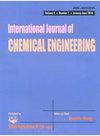On the Analysis and Assessment of First-Order Group Contribution Models for the Calculation of Normal Boiling Point and Critical Properties of Pure Compounds
IF 2.4
4区 工程技术
Q3 ENGINEERING, CHEMICAL
引用次数: 0
Abstract
The thermodynamic properties of pure compounds are relevant data for process systems engineering. Different first-order group contribution models have been reported in the literature to calculate these properties and they are also widely employed in commercial process simulators. However, they may have some limitations and, consequently, a reliable comparison of these models is required to analyze their performance and to determine the best alternative for the calculation of pure compound properties. This paper reports the implementation and evaluation of several first-order group contribution models to calculate the normal boiling point and critical properties (temperature, pressure, and volume) of pure compounds. The performance of these models was characterized and compared for several compound families using a standardized approach to determine their group contributions and parameters. An artificial neural network model was also applied and assessed to improve the estimations obtained with the best group contribution models. Results showed that the calculation of critical temperature was challenging for several compound families where AARD values ranged from 0.05 to 56.28%, while the group contribution models were more accurate to estimate the critical volume with AARD values ranging from 0.48 to 35.99%. This study allows us to identify the limitations and gaps of this type of thermodynamic models with the objective of improving its performance for the calculation of pure compound thermodynamic properties. The findings of this study can help to enhance the capabilities of thermodynamic models for the calculation of the normal boiling point and critical properties of pure compounds, which are relevant for the process systems engineering of new operations and products.纯化合物标准沸点和临界性质计算中一阶基团贡献模型的分析与评价
纯化合物的热力学性质是过程系统工程的相关数据。文献中已经报道了不同的一阶群贡献模型来计算这些性质,它们也被广泛应用于商业过程模拟器中。然而,它们可能有一些局限性,因此,需要对这些模型进行可靠的比较,以分析它们的性能,并确定纯化合物性能计算的最佳替代方案。本文报道了几种一阶群贡献模型的实现和评价,用于计算纯化合物的正常沸点和临界性质(温度、压力和体积)。这些模型的性能进行了表征和比较几个化合物族使用标准化的方法来确定他们的群体贡献和参数。利用人工神经网络模型对最佳群体贡献模型的估计进行了改进。结果表明,在AARD值为0.05 ~ 56.28%的复合科中,临界温度的计算较为困难,而在AARD值为0.48 ~ 35.99%的复合科中,群体贡献模型对临界体积的估计更为准确。这项研究使我们能够确定这类热力学模型的局限性和差距,目的是提高其计算纯化合物热力学性质的性能。本研究的发现有助于提高热力学模型计算纯化合物的正常沸点和临界性质的能力,这与新操作和新产品的工艺系统工程有关。
本文章由计算机程序翻译,如有差异,请以英文原文为准。
求助全文
约1分钟内获得全文
求助全文
来源期刊

International Journal of Chemical Engineering
Chemical Engineering-General Chemical Engineering
CiteScore
4.00
自引率
3.70%
发文量
95
审稿时长
14 weeks
期刊介绍:
International Journal of Chemical Engineering publishes papers on technologies for the production, processing, transportation, and use of chemicals on a large scale. Studies typically relate to processes within chemical and energy industries, especially for production of food, pharmaceuticals, fuels, and chemical feedstocks. Topics of investigation cover plant design and operation, process design and analysis, control and reaction engineering, as well as hazard mitigation and safety measures.
As well as original research, International Journal of Chemical Engineering also publishes focused review articles that examine the state of the art, identify emerging trends, and suggest future directions for developing fields.
 求助内容:
求助内容: 应助结果提醒方式:
应助结果提醒方式:


